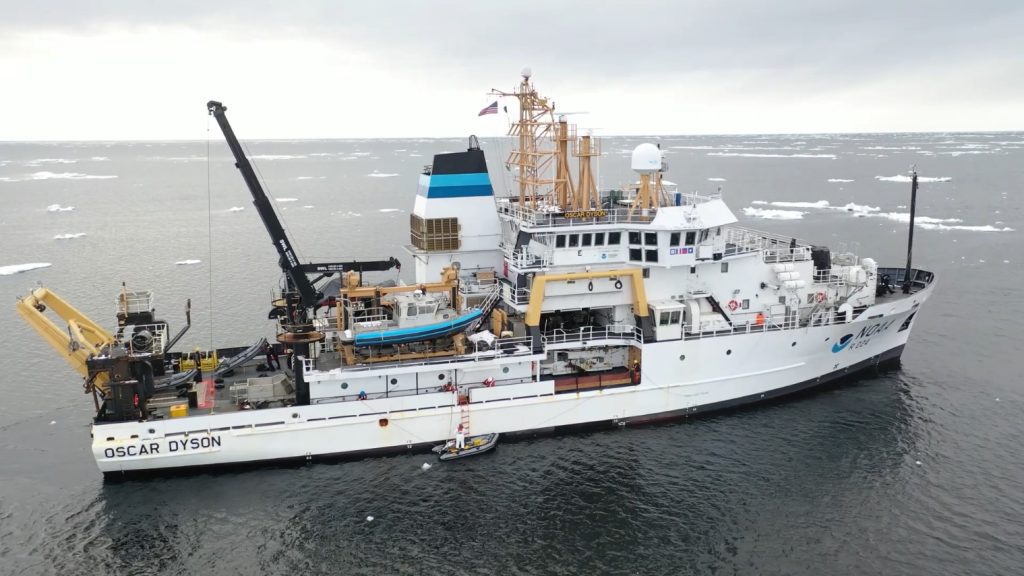ARTICLE AND FIGURES PROVIDED BY: MICHAEL CAMERON AND HEATHER ZIEL (NOAA AFSC)
NOAA’s Alaska Fisheries Science Center’s (AFSC) studies Alaska’s marine ecosystems to ensure the sustainable use and conservation of living marine resources in federal waters. A recent study done by NOAA scientists focuses on surveying ice seals, with the primary goal of deploying non-invasive, low-disturbance methods for monitoring the body condition of Arctic seals as an indicator of population health and productivity. This work complements and expands the capabilities of NOAA’s existing large-area photographic surveys to monitor Arctic seal populations and their responses to a rapidly changing environment. The methods and techniques developed throughout this project will greatly enhance NOAA Fisheries capabilities to assess the status and trends of bearded, ringed, spotted, ribbon, and harbor seals in Alaska, as well as meet the agency’s responsibilities under the Marine Mammal Protection Act (MMPA) and Endangered Species Act (ESA).
From April 8th-25th 2022, researchers with the The Polar Ecosystems Program (PEP) embarked on the NOAA AFSC ice seal research expedition aboard the NOAA Ship Oscar Dyson in the eastern Bering Sea (Figure 1). During this expedition, researchers explored the marginal zone of the pack ice to study the habitat requirements and ecological relationships with sea ice of ribbon and spotted seals (collectively termed ice seals) in the core of their Bering Sea breeding area (Figure 2). The seals’ movements, haul-out behavior, diet, genetic population structure, and health were investigated and monitored. The three research goals were:
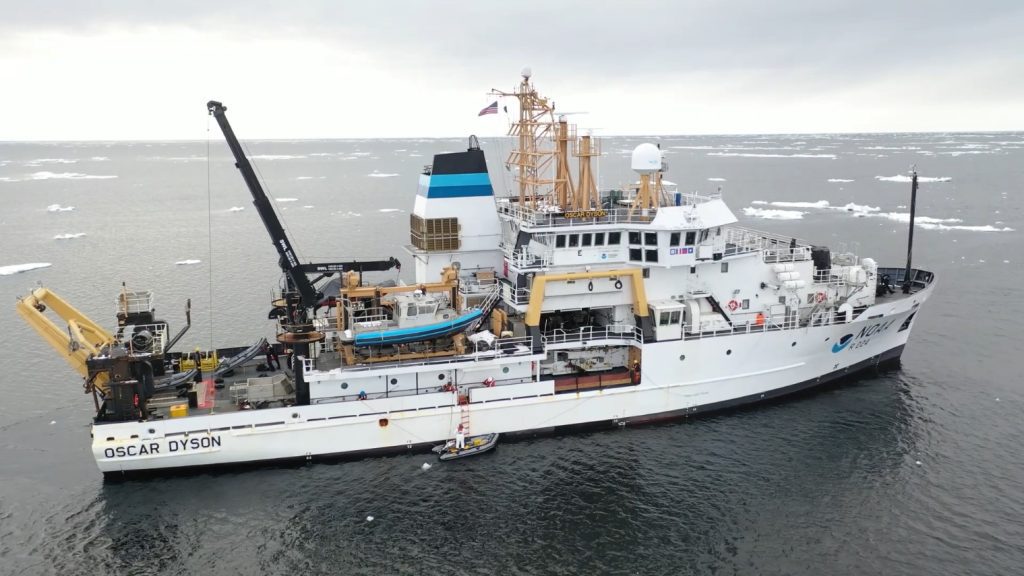
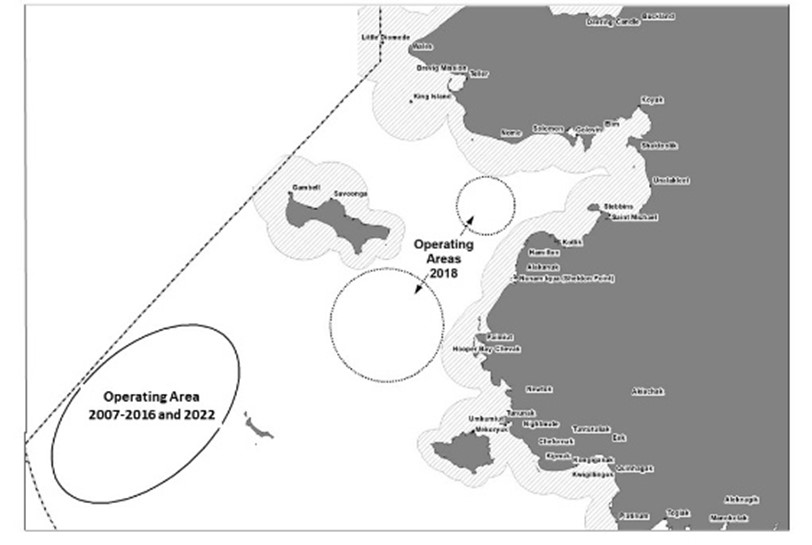

1) to capture ribbon and spotted seals and instrument them with satellite-linked data recording tags (SDRs) before releasing them to examine their seasonal movements, foraging behavior, and timing of haul-out;
2) to collect measurements and tissue samples to assess seal health and condition; and
3) to use uncrewed aerial systems (UAS) (Figure 3) to collect images and investigate impacts of changing ecosystems on seal body condition. A particular focus of the work being done in 2022 is the potential impacts of diminishing sea ice on the health and condition of young-of-the-year seals and their mothers.
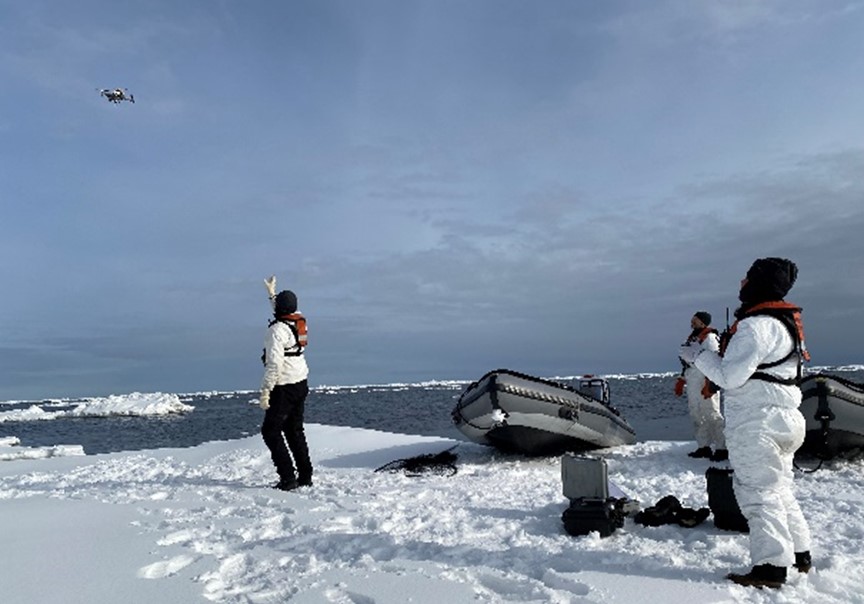

Data from the SDRs will be used to better understand the seasonal movements and diving behaviors of ice seals. The daily pattern and timing of a seal’s decision to haul out onto the sea ice will also be used to develop correction factors needed to adjust counts from aerial abundance surveys for the proportion of seals that are in the water, and not observed, during aerial surveys. Sampling data will be used to assess the current health and stock structure of ice seals and to develop a baseline dataset against which these parameters can be compared in the future. Imagery taken from the UAS (Figure 4) will be used to obtain information about the body condition of Arctic seals as an indicator of population health and productivity. Monitoring the body condition of ice seals is becoming increasingly important considering the recent rapid changes in the Arctic environment. This new method is needed to increase the sample size and precision over current capabilities based on direct measurements of relatively small numbers of seals caught and handled during previous expeditions.
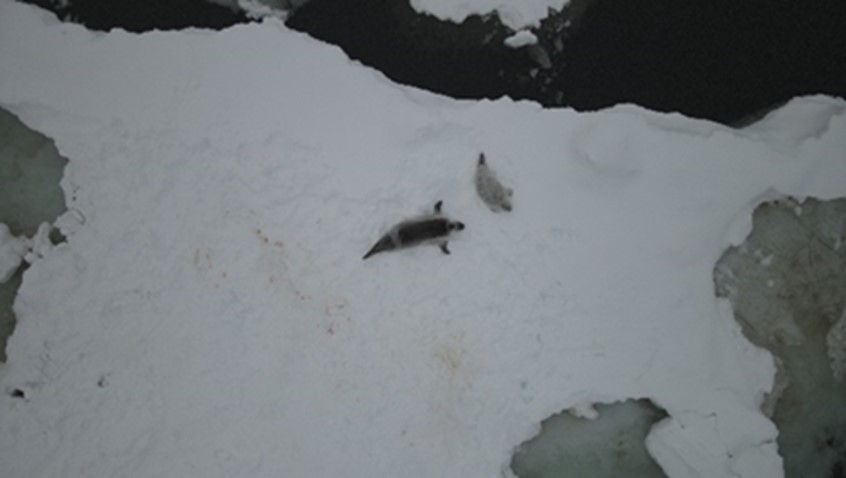

The NOAA Ship Oscar Dyson brought scientists to the southern edge of the marginal ice zone, where they could launch small inflatable boats to locate and capture ice seals hauled out on ice floes (Figure 5). During the expedition, scientists and crew members faced various challenges including an abbreviated cruise duration of only 11 days in the marginal ice zone (compared to the usual 21 days) and unusually poor weather with heavy fog, snow, and high winds and swell for most of the trip. In spite of these challenges, scientists were able to capture five seals and collect measurements (length, girth, mass) and biological samples (blood, skin samples, nasal and rectal swabs, whisker, hair, blubber thickness measurements). One adult male spotted seal and one adult female ribbon seal were instrumented with satellite tags (immediately operational) to provide location, diving data (dive depths, durations), environmental data during dives, and haul-out data. Scientists were also able to use the UAS to collect images of seals which will be used to assess methods for estimating seal body condition and to monitor body condition from UAS imagery over time.
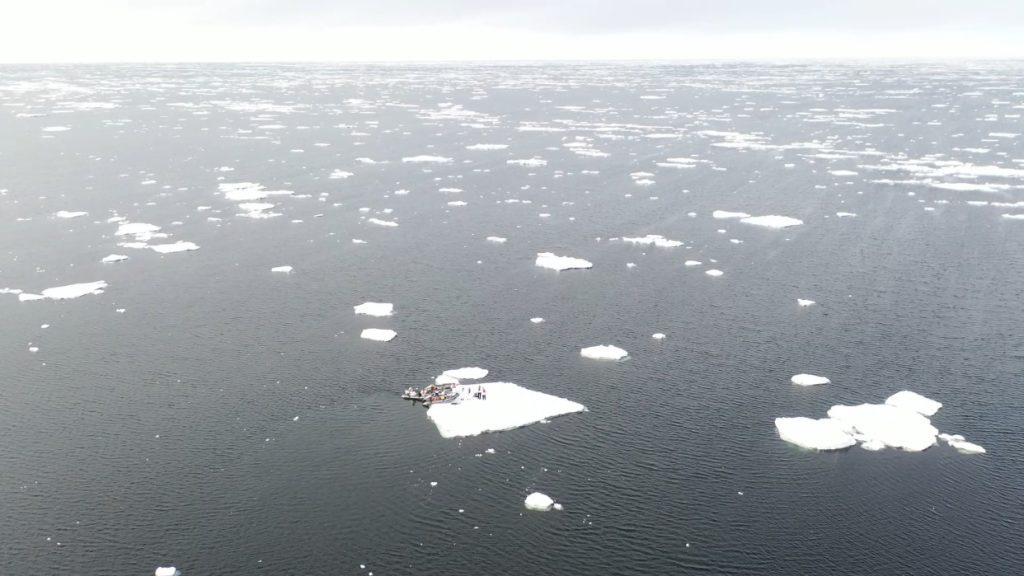

This successful implementation of UAS technology was supported by OAR’s Uncrewed Systems Research to Transitions Office (UxSRTO) and provided PEP the capability to develop and test methodologies for collecting images of free-ranging seals using a small UAS and digitally extract scaled measurements from the images to calculate a body condition statistics. This capability will help in monitoring seal population health and productivity in the Arctic.

